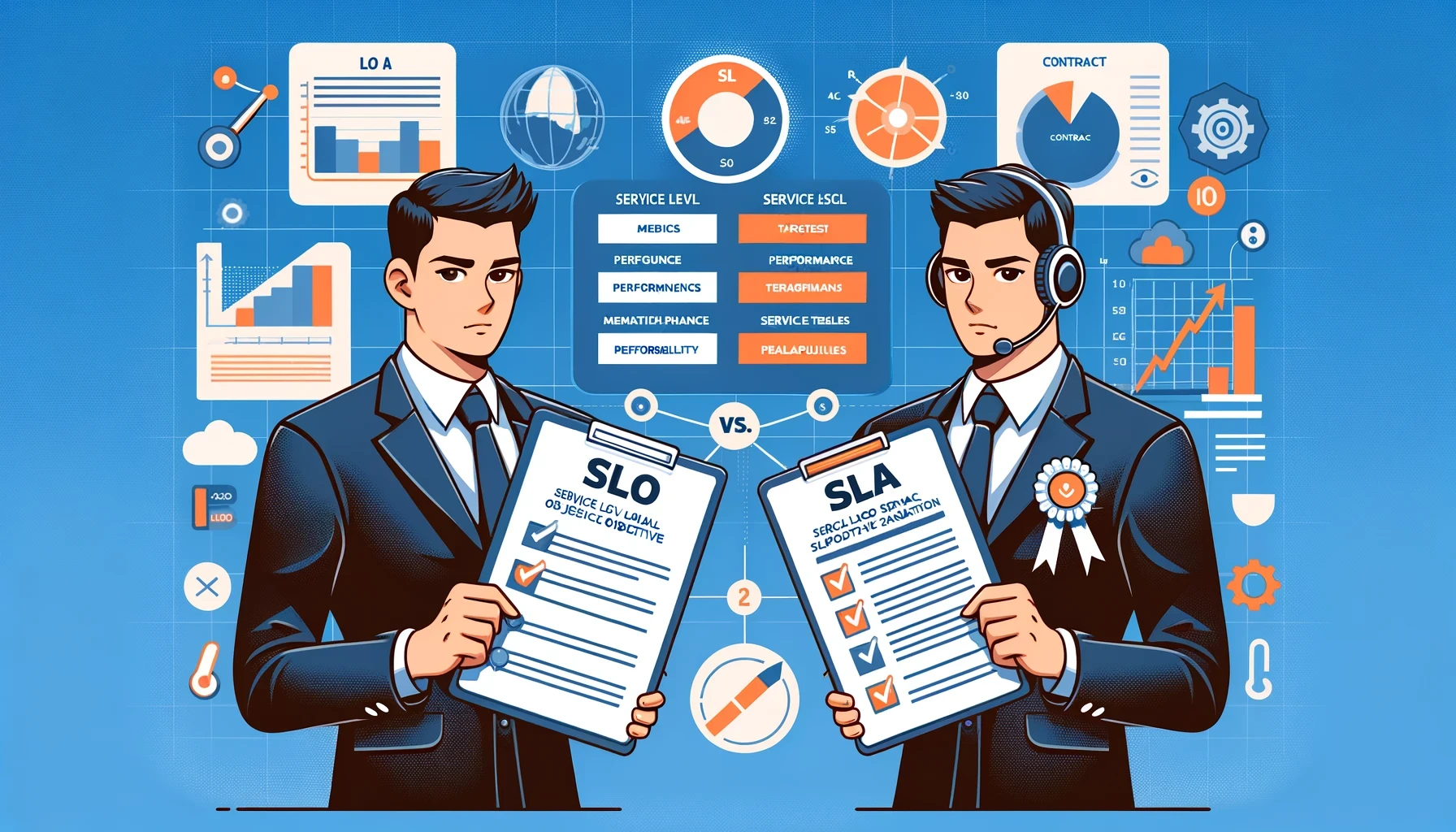SLO Vs SLA
27 трав. 2024 р.

In the world of IT and service management, the terms Service Level Objective (SLO) and Service Level Agreement (SLA) are often used interchangeably, but they have distinct meanings and purposes. Understanding the difference between SLOs and SLAs is crucial for setting clear expectations and ensuring service reliability. In this article, we will compare SLOs and SLAs to help you understand their roles and how they work together.
What is an SLA?
A Service Level Agreement (SLA) is a formal contract between a service provider and a customer that defines the level of service expected from the service provider. It includes specific metrics and standards that the service must meet, such as uptime, response time, and resolution time. SLAs are legally binding and often include penalties or compensation if the service provider fails to meet the agreed standards.
Key Components of an SLA:
Service Description: Detailed description of the services provided.
Performance Metrics: Specific metrics used to measure service performance, such as uptime percentage and response times.
Responsibilities: Clearly defined responsibilities of both the service provider and the customer.
Penalties and Compensation: Terms for penalties or compensation if the service levels are not met.
Review and Reporting: Processes for reviewing performance and reporting on service levels.
What is an SLO?
A Service Level Objective (SLO) is a key element within an SLA that defines specific performance metrics and targets that the service provider aims to achieve. SLOs are used internally to guide service providers in delivering the agreed level of service. While SLAs are customer-facing and legally binding, SLOs are more operational and are used to ensure that the service provider meets the SLA requirements.
Key Components of an SLO:
Performance Metrics: Specific metrics used to measure service performance, such as uptime, latency, and error rates.
Targets: The desired performance targets for each metric, such as 99.9% uptime or a response time of under 200 milliseconds.
Monitoring and Reporting: Processes for monitoring performance against the targets and reporting the results.
Operational Focus: Used internally to manage and improve service delivery.
SLO Vs SLA: Key Differences
Purpose and Scope
SLA: A formal contract with customers outlining the expected level of service and associated penalties for non-compliance. It is legally binding and customer-facing.
SLO: An internal target for service providers to ensure they meet the performance metrics defined in the SLA. It is not legally binding and is operationally focused.
Metrics and Targets
SLA: Includes high-level performance metrics and broad targets that are agreed upon with the customer.
SLO: Contains more detailed and specific performance targets that guide the operational efforts of the service provider.
Enforcement and Penalties
SLA: Includes clauses for penalties or compensation if the service provider fails to meet the agreed service levels.
SLO: Used internally with no direct penalties, but failing to meet SLOs can impact the ability to meet SLAs and affect customer satisfaction.
Audience
SLA: Customer-facing, involving formal agreements between the service provider and the customer.
SLO: Internal, guiding the service provider’s operations and performance management.
How SLOs and SLAs Work Together
SLOs are the building blocks of SLAs. While SLAs set the expectations and requirements from a customer perspective, SLOs break down these requirements into manageable, operational targets. By consistently meeting SLOs, service providers ensure that they fulfill the SLA commitments. This hierarchical approach helps to maintain high service standards and customer satisfaction.
Examples of SLOs and SLAs
SLA Example: An SLA between a cloud service provider and a customer might guarantee 99.9% uptime per month. If the service falls below this level, the provider must offer financial compensation.
SLO Example: To meet the 99.9% uptime SLA, the service provider might set internal SLOs such as:
99.95% uptime for database services.
Response time under 100 milliseconds for API requests.
Error rate below 0.01% for transaction processing.
Conclusion
Understanding the difference between SLOs and SLAs is essential for effective service management. SLAs set the expectations and requirements from a customer’s perspective, while SLOs help service providers achieve these goals through specific, operational targets. By aligning SLOs with SLAs, organizations can ensure they meet customer expectations and maintain high service standards.
EzUptime is a simple yet efficient Uptime Monitoring service
Learn more
